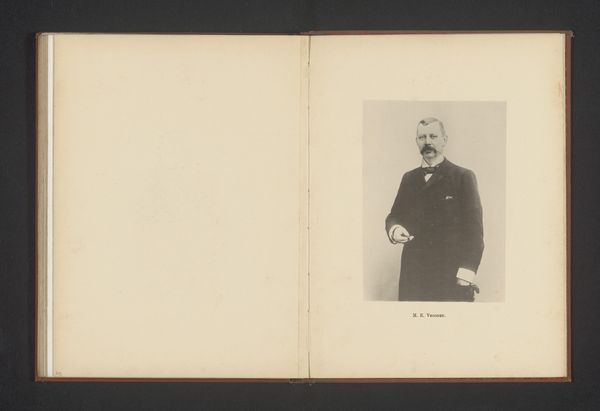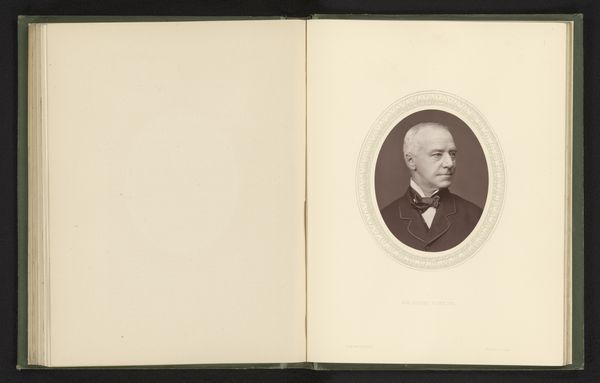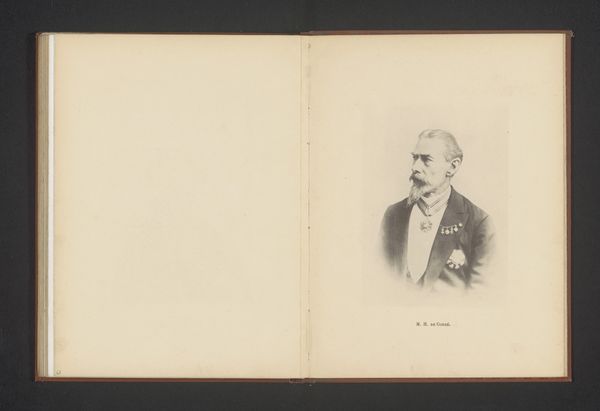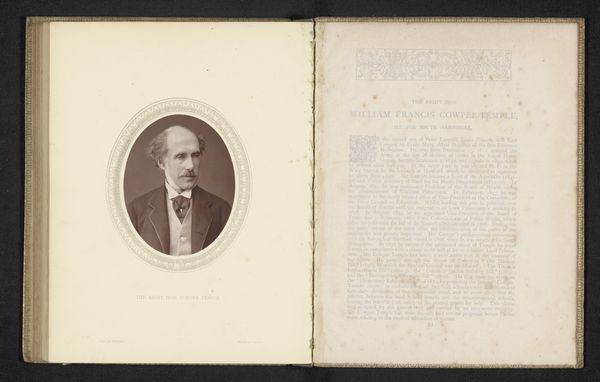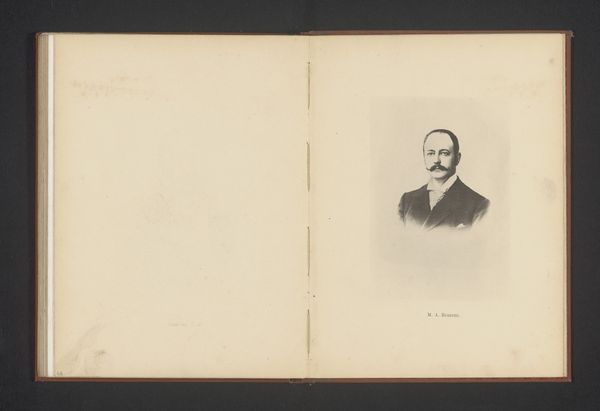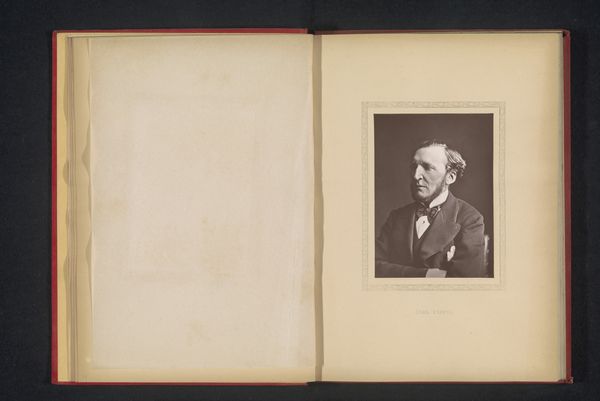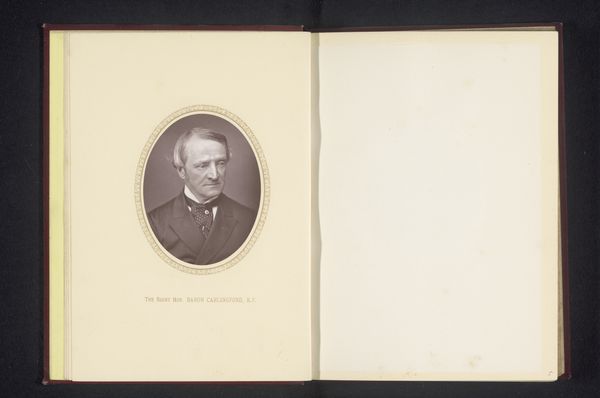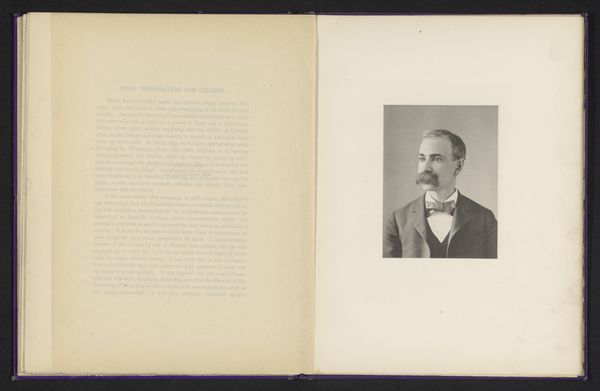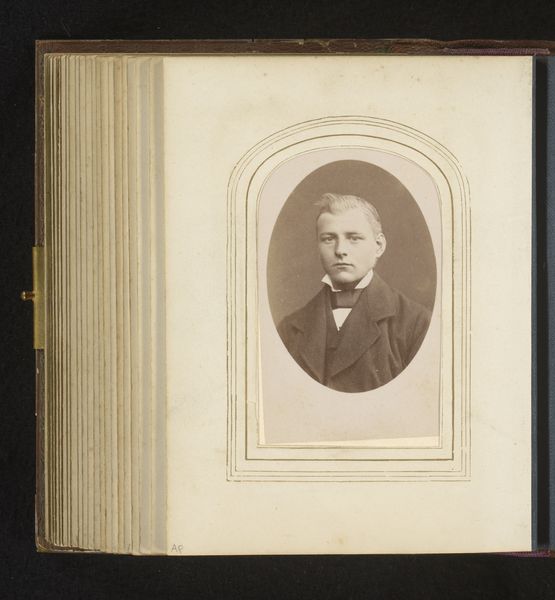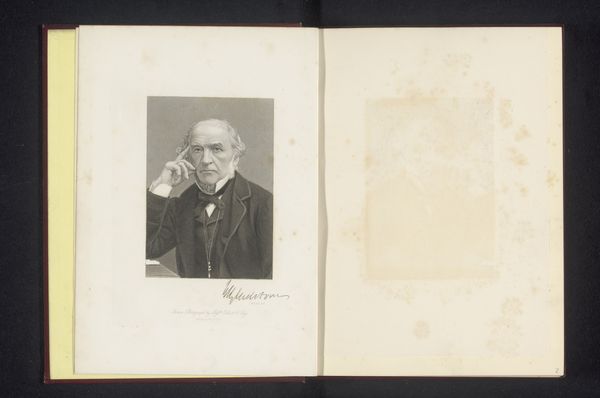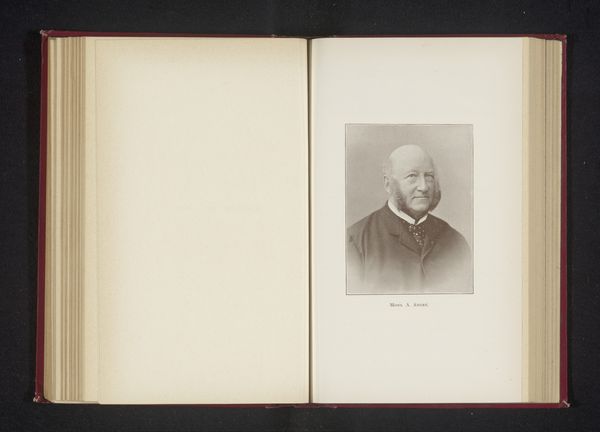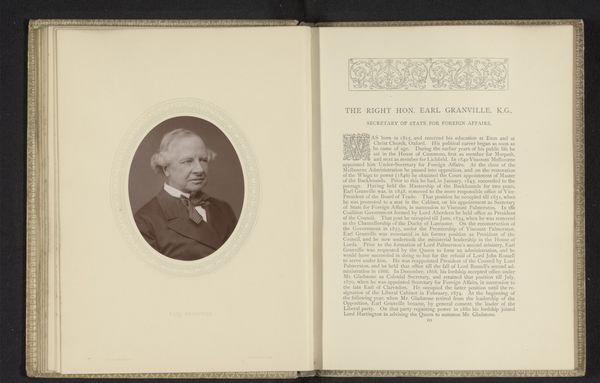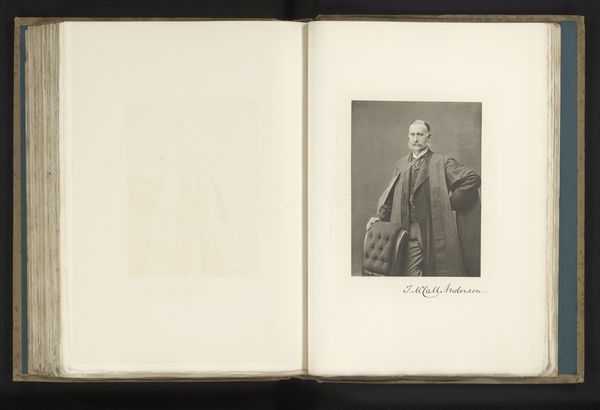
photography
#
portrait
#
photography
Dimensions: height 115 mm, width 89 mm
Copyright: Rijks Museum: Open Domain
Editor: So this portrait of Sir Joseph William Bazalgette, created before 1877 by Lock & Whitfield, is really striking in its composition; the sepia tone of the photograph set against the stark open book emphasizes a sort of austere mood. As a photograph, though, what should we be considering when we interpret the portrait? Curator: Well, from a materialist perspective, we need to think about the entire photographic process: the labour, resources, and social structures involved. Photography in the late 19th century was becoming increasingly accessible, but remained far from universally practiced; studios like Lock & Whitfield were commercial enterprises capturing and circulating images, producing social status in the process. Editor: That's a fascinating angle, to consider photography itself as a manufactured product! Does that affect how we see Bazalgette? Curator: Absolutely! Consider how photography immortalizes, in a sense creating a fabricated object; but it relies also on very real components. We have Bazalgette, whose likeness becomes permanently connected to a certain process, a form of circulation, which lends its authority to the sitter. He is being marketed, elevated to a kind of commercial prominence, and it's through this photographic process, through the wet plate collodion process, and the eventual print that this becomes materially available. Editor: So it's not just a neutral representation of him, but a construction of his identity linked to photographic labour? Curator: Exactly. And one distributed as a commodity. To take a further step back, photography itself was rapidly changing production techniques; so think about how labor trends change art, too! Editor: I’d never considered the photo production process in such detail before; now I'm thinking about the social and economic factors intertwined with it all. It's a very thought-provoking perspective, changing what is an “image” to instead thinking about what production looks like! Curator: Precisely, and hopefully you see why looking at artistic works, as a whole system and its mechanisms helps to recontextualize the cultural value behind artworks!
Comments
No comments
Be the first to comment and join the conversation on the ultimate creative platform.

